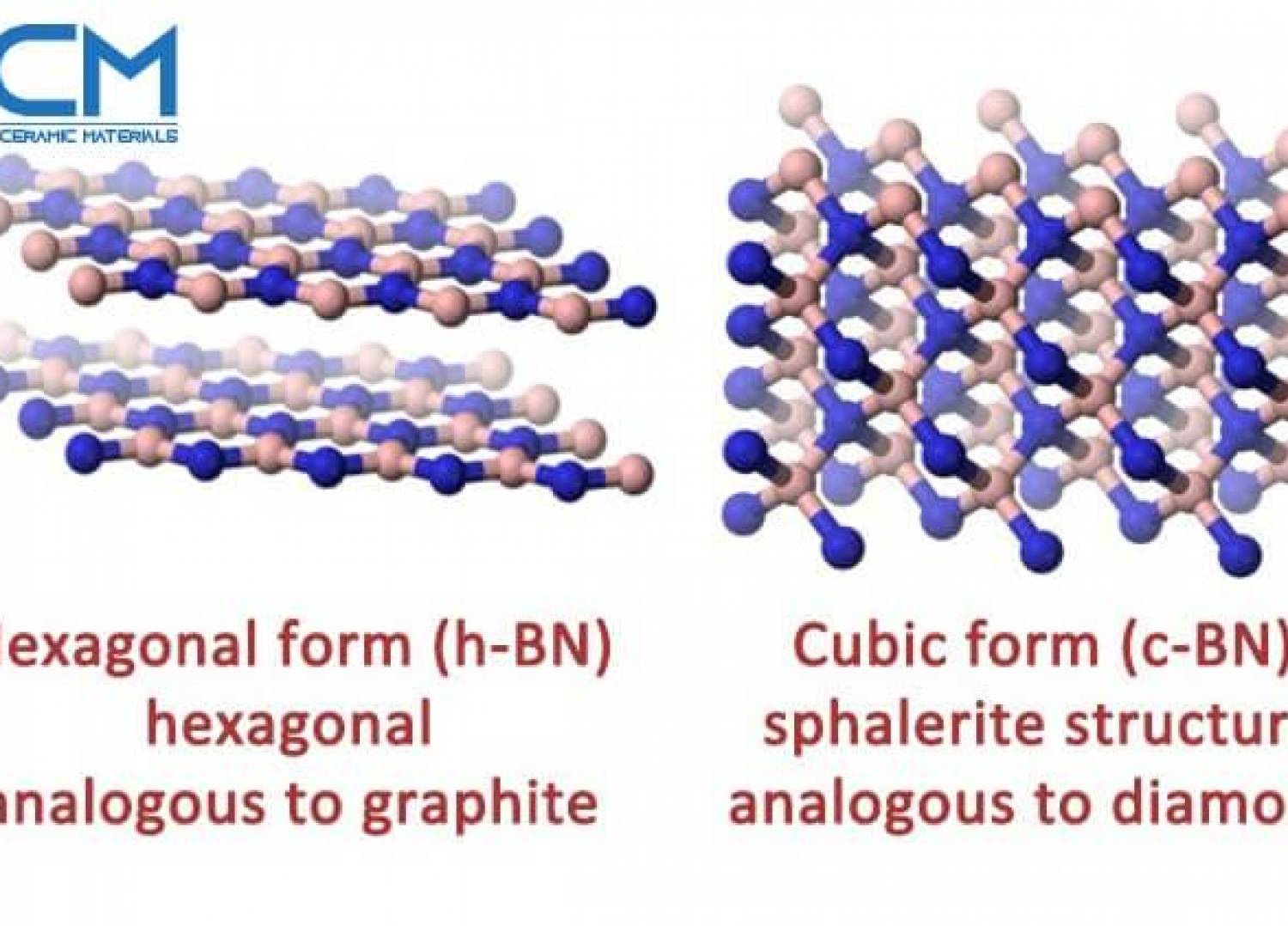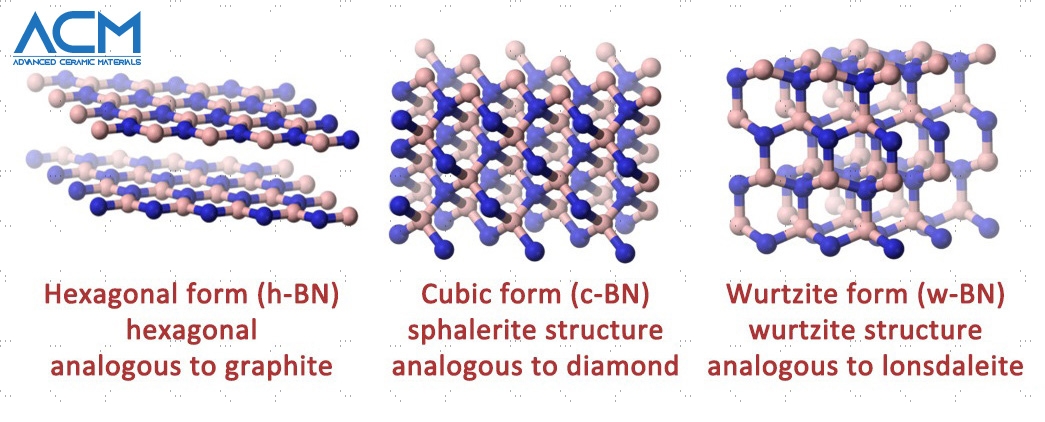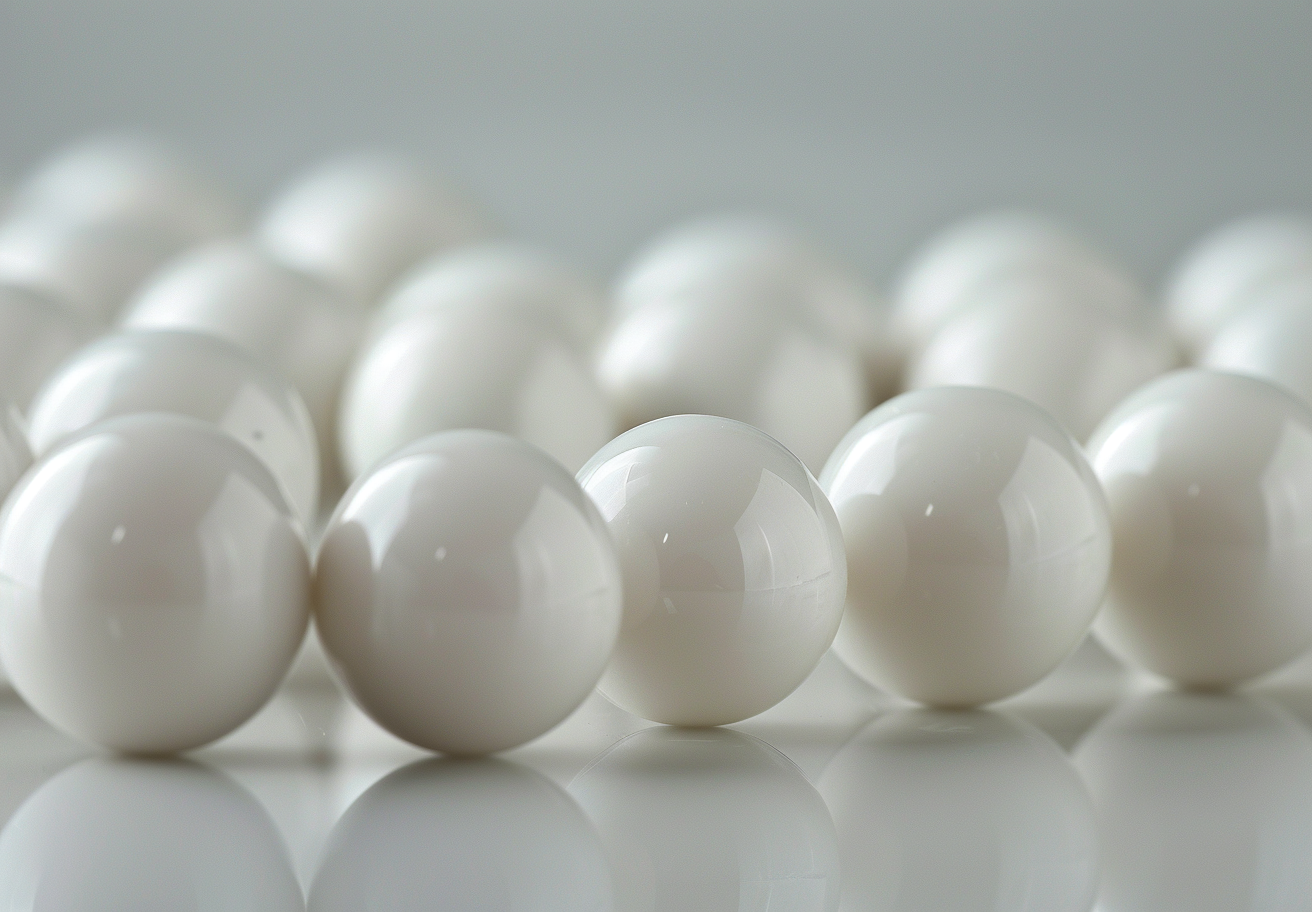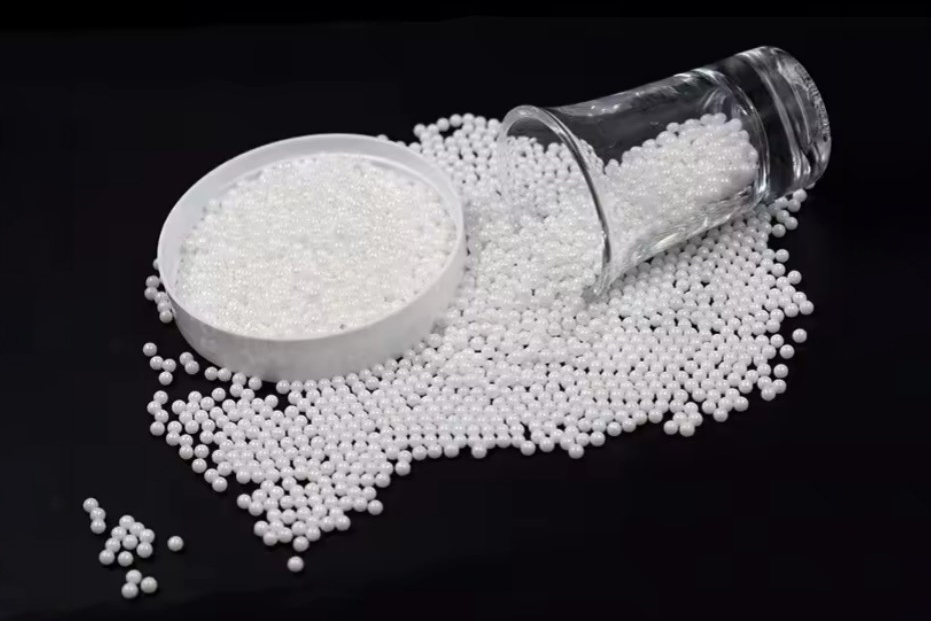Features and Common Products of Boron Nitride Ceramics

Boron nitride (BN) is a type of advanced ceramic materials which has excellent performance and great development potential. Because of excellent thermal and chemical stability, boron nitride ceramics are traditionally used as parts of high-temperature equipment. Boron nitride has potential use in nanotechnology.
It is generally believed that there are mainly five isomerides of boron nitride: hexagonal boron nitride (h-BN), wurtzite boron nitride (w-BN), three isomers of trigonal boron nitride (r-BN), cubic boron nitride (c-BN) and orthorhombic boron nitride (o-BN). The most common of these isomerides are h-BN and c-BN. The h-BN is the softest and most stable form and is therefore used as lubricant and an additive to cosmetic products. The cubic c-BN has a high hardness which is inferior only to diamond.

The crystal structure of Boron nitride and the B-N bond characteristics determine that it has many excellent physical and chemical properties, such as low density, high temperature resistance, thermal shock resistance, oxidation resistance, high thermal conductivity, high electrical resistivity, high electric field breakdown strength, excellent room temperature and high temperature dielectric properties, chemical resistance, non-toxic white, self-lubricating, good processability, low density, high temperature oxidation resistance, high heat of vaporization and excellent lubrication properties. Boron nitride ceramics are widely used in high-tech fields such as machinery, metallurgy, electronics, space science, etc., and have a very broad application prospect.
According to the relationship between the electronegativity difference ΔX of the compound and the ion binding condition, in several commonly used ceramic materials, the proportion of BN ion bond is the smallest and the covalent bond component is the highest. Covalently bonded crystals generally have the characteristics of stable structure and low reactivity, so boron nitride is a structurally stable high-quality ceramic material.
Boron Nitride Plate
Boron Nitride plate, also referred to as white graphite, are non-abrasive, white sheet with a hexagonal platy crystal structure similar to graphite, but with a much higher oxidation resistance at 800 C. Boron Nitride ceramic plate has high thermal conductivity, low coefficient of friction, high dielectric constant and are chemically inert. Due to those unique properties, boron nitride plate is used in a broad range of applications ranging from electronics, aerospace, oil and gas and ceramic manufacturing.
Boron Nitride Tube
Boron nitride nanotubes were predicted in 1994 and experimentally discovered in 1995. Structurally they are similar to carbon tubes, which are cylinders with sub-micrometer diameters and micrometer lengths, except that carbon atoms are alternately substituted by nitrogen and boron atoms. However, the properties of Boron Nitride tubes are very different: whereas carbon tubes can be metallic or semiconducting depending on the rolling direction and radius, BN tubes are an electrical insulator with a bandgap of ~5.5 eV, basically independent of tube chirality and morphology. For more information, please visit https://www.preciseceramic.com/.
{{item.content}}
LEVE A REPLY
{{item.children[0].content}}
{{item.content}}











